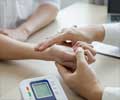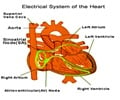- All About Heart Rate (Pulse) - (http://www.heart.org/heartorg/conditions/more/myheartandstrokenews/all-about-heart-rate-pulse_ucm_438850_article.jsp#.vul-dh197iu)
- Fitness - (http://www.mayoclinic.org/healthy-lifestyle/fitness/expert-answers/heart-rate/faq-20057979)
- Does Your Heart Rate Really Matter? - (http://www.acefitness.org/acefit/fitness-programs-article/2425/acefit-workout-advice-and-exercise-tips/)
- Palpitations ––When to Worry - (http://www.womensheart.org/content/newsletter/archivedarticles/2001_05_article_palpitationswhentoworry.asp)
Identifying and Measuring Heart Rate
Heart rate and pulse at your wrist both indicate the rate at which the heart beats. Heart rate is measured in terms of the number of times the human heart beats in one minute. It is denoted as “beats per minute” or BPM. Other measurements taken while reading the heart rate include rhythm, strength and hardness of the blood vessels. Abnormal heart rate, rhythm or strength indicates heart disease or other heart problem.
Heart beat can be felt as the pulses of some blood vessels that run just beneath the skin surface. Some areas where it can be felt are wrist, neck, upper arm or ankle. The number of pulses over a period of one minute is the pulse rate. The pulse rate when a person is at rest is called resting pulse. The rate is faster when it is taken after exercise, during stress or fever.
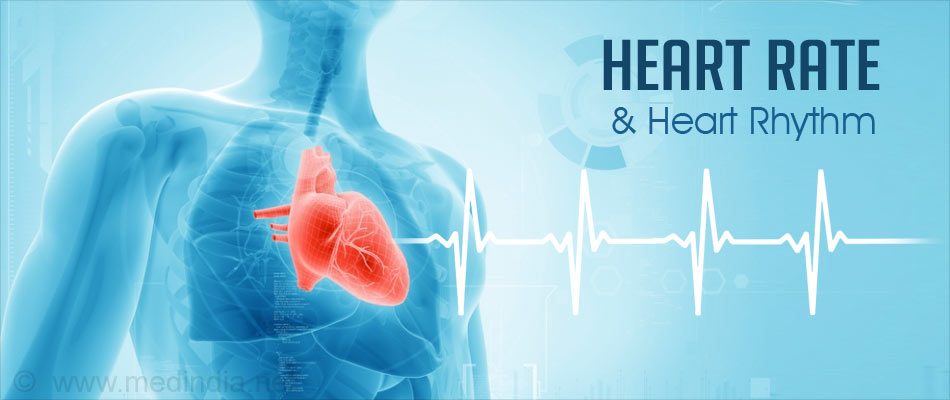
How to Check Your Heartbeat?
Heartbeat can be monitored by checking the number of pulses of the blood vessels running beneath the skin of certain areas. These areas include the wrist, neck, temple, just below the elbow, behind the knee or on the top of the foot.
- Gently press 2 fingers on the top of the artery, just where you can feel the pulse.
- Count the pulses for 30 seconds and double the number to get the heart rate.

Using thumb to press on the pulsating blood vessel may give wrong results as the thumb has a bigger artery that runs just below the surface.
Resting pulse of a person varies according to the age, regular physical activity levels and the time of the day that it is measured. It becomes faster during deep breathing also.
| Age | Number of beats/minute (BPM) |
| 0-1 years | 100 – 170 |
| 1 to 10 years | 70 – 120 |
| 11 to 17 years | 60 – 100 |
| 18 - 50 years | 60 – 100 |
| 50 – 60 years | 60 – 100 |
| 60 and above | 50 – 100 |
Other factors that influence the heart rate are surrounding temperature, body position, body size and use of certain medications.
Heart rates can be checked with various devices like heart rate monitors and electrocardiogram (ECG/EKG). Information like elevated heart rate and abnormal heart rhythm is easily noticeable with the help of these devices.
When the rate of heart beat is slower than normal, the condition is called bradycardia and when the rate is faster than the normal rate, it is called tachycardia. Both bradycardia and tachycardia may or may not be related to any underlying medical conditions. Tachycardia occurs after heavy physical activity or when someone is suddenly frightened or in excitement.
Heart Rhythm
Heart rhythm is the steady, rhythmic sequence of the pumping of the heart to draw blood into its chambers and push the same out to the arteries.
The heart muscle is divided into four chambers – left atrium, right atrium, left ventricle and the right ventricle. The two atria are the “upper chambers” while the two ventricles are the “lower chambers”.
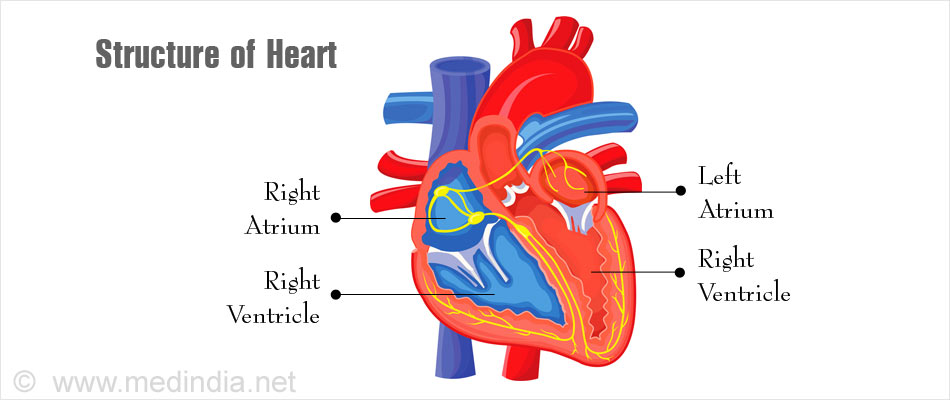
Each cycle of heartbeat consists of the following actions of the heart.
- Each atrium draws blood from its respective veins and sends it to the ventricle below it.
- The valves located at the junction of each atrium and ventricle open only one way and close immediately after sending the blood to the ventricle.
- Each ventricle, in turn, pumps the blood into the arteries that are connected.
- Similar one-way valves are located at the end of each ventricle that open and close after the blood is pumped out of the heart.
- The squeezing of the chambers of the heart is caused by a built-in electrical system, the natural pacemaker of the heart.
Heart rhythm can go wrong if any one of the above processes is disrupted. Sinus rhythm is the uniform pattern of the heart beats. The electrical stimulus is initiated at the sinoatrial node (natural pacemaker of the heart). It moves towards the atrioventricular node, then to the bundle of His and its branches and reaches the Purkinje fibers (the fibers located in the inner ventricular walls of the heart).
The heart rate and rhythm are measured in a graph by the electrocardiogram. The electrocardiogram prints the heartbeats in the form of a wave. The crests and troughs formed in each wave have a peak. Each peak of the wave is named P, Q, R, S and T and are related to each part of the heartbeat cycle.
- Peak P – Contraction of the atria.
- PR segment – Return of the atrial contraction to the baseline. PR interval is shortened when heart rate increases.
- QRS complex – Contraction of ventricles and completion of cardiac contractions. With this, begins the next cycle of atrial contraction.
- ST segment – End of ventricular contraction and beginning of the recovery of ventricles.
- T Peak – Represents full recovery of ventricles. After T-wave, there is a small period of heart rest indicated as a straight line in ECG.
Rhythm Disorders of the Heart
Arrhythmia is a broad term used to describe any irregularity in the heartbeat or rhythm. It may be indicated as fast or slow heartbeat, missing a heartbeat sound or fluttering feeling of the heart.
Rhythm disorders of the heart can be classified according to the part of the heart that is damaged.
Arrhythmias Due to Problem of Atrium:
- Atrial Fibrillation: The atria of the heart quiver rapidly and irregularly when they are pumping blood into the ventricles. This may occur due to misfiring of electrical signals that coordinate the muscles of the atria.
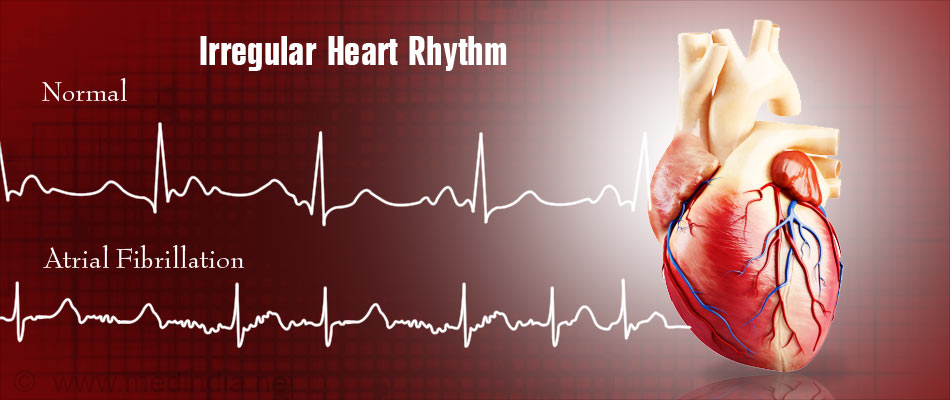
- Atrial flutter: The rate of the atria is too fast and do not synchronize with the rate of ventricles. This condition is caused by the disruption of a single electrical wave that circulatesswiftly over and over again around the right atrium.
- Sinus tachycardia: The term refers to increase in the heart rate without any disturbance in the rhythm or beat. This occurs during fever, emotional excitement and after exercise.
- Supraventricular tachycardia: It refers to the fast heart rhythms that are not dangerous, but can result in palpitations and shortness of breath. The pulse is also felt as steady but faster than normal.
Arrhythmias Due to Problem in the Ventricles:
- Ventricular tachycardia: Characterized by very fast heart rate, this condition is usually life-threatening and is caused due to the problem in the ventricular rhythm.
- Ventricular fibrillation: The heartbeat is rapid and chaotic in ventricular fibrillation. This prevents blood flow from the ventricles to the brain and the body, resulting in sudden cardiac arrest. The blood pressure falls to zero and the person loses his consciousness.
Arrhythmias Caused by Problems in the Electrical Impulses:
- Premature contractions: The heart beats may be felt like an extra, early or skipped beat at the pulse.
- Long QT syndrome: The recovery of the cells of the heart muscle from the electric signal is delayed after each heartbeat.
- Heart block: Electrical impulses are not transmitted properly from the atria to the ventricles, causing an uncoordinated movement of the upper and lower chambers of the heart.
Arrhythmias Caused by Structural Problems of Heart:
- Weak heart muscle: Heart failure is caused by weakness of heart muscle that cannot effectively pump blood throughout the body.
- Heart valve problems: Defective valves can cause the blood to be pumped back into the chamber from which it is being pushed downwards. Such movements of the blood or improper closure of the valves cause variations in heart rate, rhythm and sounds.
What Does it Mean When Your Heart Beats Fast?
One can feel their heart beating very fast, pounding or racing. Fast beats or palpitations can be felt in the chest, throat or neck. Unpleasant awareness of one’s heartbeat, the feeling of skipping a beat or fast beats of heart is usually observed.
Palpitations or fast heart rate are not always dangerous, as they occur in normal conditions like after exercise, during stress or emotional upheaval.
Some of the reasons for fast heartbeat include:
- After exercise
- Stress, panic or anxiety
- Intake of nicotine, cocaine or other illegal drugs
- Fever
- Caffeine intake
- Diet pills
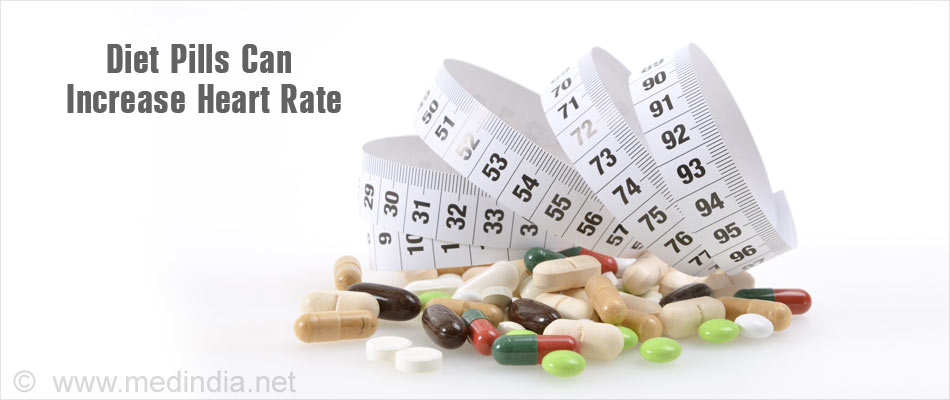
Abnormal conditions that cause fast heartbeat and require immediate medical attention include:
- Abnormal heart valve
- Heart disease
- Overactive thyroid (hyperthyroidism)
- Low oxygen levels in blood
- Abnormal levels of potassium in blood
- Medications used to treat high blood pressure, heart problems
Health Tips
- Exercise regularly to maintain a healthy heart. About 30 minutes of exercise, 4 to 5 times a week is regular enough to have a healthy heart.
- Avoid sitting all day. If your job demands you to sit at your desk all day, take a walking or stretching break every half an hour.
- Eat healthy food. Foods that are rich in fiber, protein and healthy fats are recommended for a healthy heart.
- Including certain types of fish that are rich in omega-3 fatty acids is good for your heart.
- Reduce stress in your life, even if it is with the help of meditation, yoga or simple relaxation techniques.
- Sleep regularly. A minimum of 8 hours of continuous, undisturbed sleep is a must for the health of the body and heart. A regular sleep schedule helps maintain the circadian rhythm and thus reduces stress in life.
- Stop smoking and alcohol as they are harmful to the heart.



